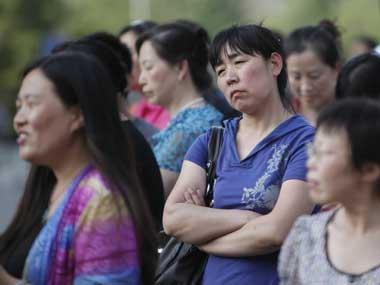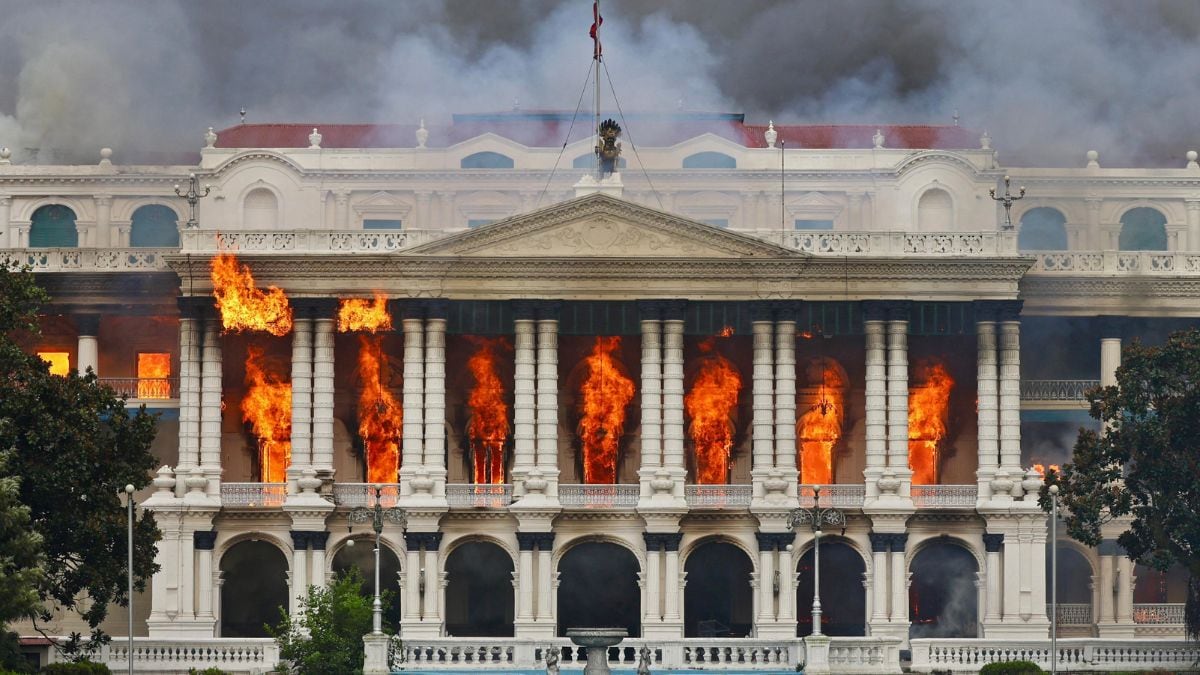China faces a financial crisis that is, relative to its economic size, about 1.5 times bigger than the global financial crisis, according to a leading strategist.
Societe Generale’s Dylan Grice points to last week's report - that the Chinese government is preparing to bail out local governments to the tune of 2-3 trillion yuan (about $300-450 billion) - as a sign of grave problems in China’s financial sector that are being “artificially suppressed”, but which will find expression in unpredictable ways.
[caption id=“attachment_23198” align=“alignleft” width=“380” caption=“A big challenge for China ahead. Jason Lee/Reuters”]  [/caption]
“Last week saw perhaps the starkest example of China’s Great Supression,” notes Grice in a research report. Pointing out that the latest bailout is similar to the template of the late 1990s, when China recapitalised its banks by having asset management companies buy the bad debts, he suggests that the story didn’t get as much attention as it should have.
The market’s overly sanguine attitude, he feels, is: “China’s government throws money at a problem ; problem goes away. Boring story… move on.”
Except, notes Grice, that the problem hasn’t gone away.A bailout of about $450 billion (as China has rolled out), he points out, is about half the size of the Troubled Asset Relief Program (TARP) - the adrenaline shot to the heart of the failing American financial sector administered at the height of the 2008 crisis in the days following the collapse of Lehman Brothers.
But China’ economy is only about one-third the size of the US economy. “Adjusted for GDP, China has just announced an emergency bailout of one and a half TARPs!” Grice reasons. “If we calibrate the magnitude of the economic crisis with the size of the bail-out, one and a half TARPs implies a financial crisis one and half times the order of magnitude of 2008.”
Impact Shorts
More ShortsHowever, not everyone shares Grice’s grim assessment of China’s debt situation. “A debt crisis is unlikely in the near future because the government’s overall debt remains manageable, it has assets at its disposal, and the country has a high saving rate,” notes UBS economist Wang Tao.
But even she acknowledges that the total local government debt could add up to about 30% of China’s GDP at the end of 2010.
“It is true that if we include the 30% of GDP in local government debt, China’s overall government debt could approach 60% of GDP, including also the legacy bad loans at the Asset Management Companies that the fiscal authority has not yet recognised,” notes Wang.
That level of debt - 50-60% of GDP - is substantially higher than official government data for debt, which puts it below 20% of GDP. Yet, Wang reckons this is still manageable, especially considering the assets and the domestic saving rate.
Even if the bulk of the 30% of GDP in local government debt goes bad, the probability of a fiscal crisis in the coming years is low, says Wang. “With the government running a fiscal deficit of less than 3% a year, still owning plenty of assets that could be disposed to pay down debt, and a national saving rate of more than 50%, we think there are enough resources to deal with the 50-60% of GDP in public debt, and the chance of a debt crisis in the next couple of years is quite low.”
That assessment is shared by UBS economist Jonathan Anderson. “We are not looking for a collapse (in China),” he told the Wall Street Journal. “We are not in the ‘run for your life’ camp.”
Even so, recent trends have inevitably had people wondering about the consequences of the latest bailout in China.
As Patrick Chovanec, an associate professor at Tsinghua University’s School of Economics and Management in Beijing, notes on his blog:China’s recent bailout announcement “may solve one short-term problem, but only in part, and it may contribute to bigger problems down the road.”
He see the bailout announcement “as more of a beginning than an end. I certainly don’t think anyone should be unfurling any ‘Mission Accomplished’ banners, as far as the health of China’s banking system is concerned. It’s more a sign that the first of many chickens has, inevitably, come home to roost.”


)

)
)
)
)
)
)
)
)



